Beautiful Plants For Your Interior
Gardening Month by Month – March
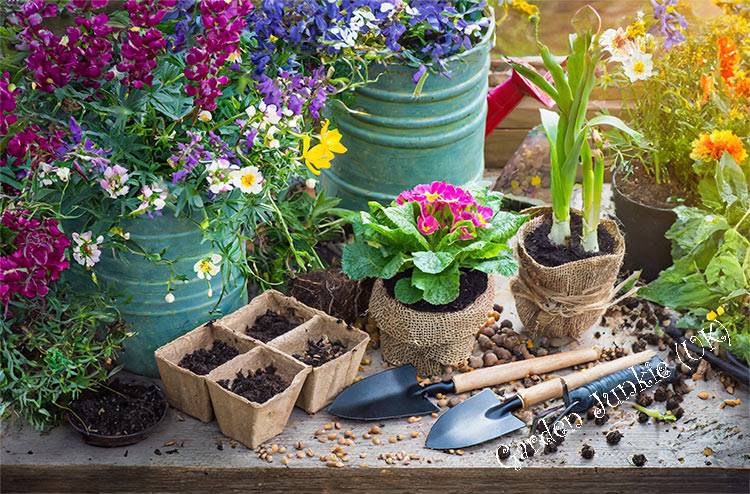
Choose Your Gardening Month by Month –
Gardening Month by Month – as you all know by now this page and pages like it are our gardening checklist pages with several reminders and some tips to help you in any particular month of the year with your garden, allotment, greenhouse, pond and general garden maintenance jobs.
Many of these tasks need to be and perhaps should be carried out in a particular month/s. Let’s see in this month (March) what needs your attention in and around the garden.
Gardening Month by Month – March
March brings a burst of activity to the garden as spring awakens. While the weather can still be unpredictable, it’s the perfect time to prepare for the vibrant season ahead.
It’s time to prepare your seedbeds, sow a variety of vegetables and flowers, and prune shrubs to encourage new growth. While some harvesting may still be possible from last year’s plantings, the focus in March is on preparing for the ‘abundance’ of the coming season.
Checkout Our March Gardening Checklist:
In March: Garden, Allotment, Flowers, Greenhouse.
In March, gardeners have a range of tasks to tackle across different areas of their outdoor and indoor garden spaces. In the garden, for instance, it’s a good time to focus on planting and sowing a variety of flowers and vegetable crops.
Embrace the longer daylight hours by sowing seeds outdoors for vegetables like broad beans, later in the month, peas, early carrots, and lettuce. If spring is slow arriving, cover the sown seeds under cloches or plastic tunnels until the ground warms up a bit.
For those who like to grow flowers, you can also start sowing hardy and half-hardy flower seeds indoors under protection or directly in the ground for tougher varieties. Half-hardy annuals like French and Pot Marigolds (Calendula), Antirrhinum (snapdragons), Cosmos, and Cleome can all be sewn in March, as the lengthening and warming days provide an ideal environment for the growth of these plants.
Rose gardeners should also pay attention to planting ‘bare-root’ roses, as March is the latest month for this activity. In addition, give your other roses a ‘final’ prune before the new growth begins.
You can also, prune in March other shrubs like Dogwood and Cotinus (Smoke Bush) to encourage vigorous new shoots.
March also provides the last chance for us to plant some late Spring and early Summer flowering bulbs. Daffodils like (Tête-à-tête) as a ‘potted bulb’ for your patio, and Asiatic Lilies and Gladioli (Nanus) can also be planted this month, adding a touch of colour to your borders later in the season.
Get a head start on the season in the greenhouse too, by sowing seeds for peppers, tomatoes, and other warmth-loving vegetables. You can also begin hardening off any seedlings started indoors over the winter months. You can start ‘potting up’ dahlia tubers and other tender plants susceptible to frost this month. This will allow them to grow safely until the risk of frost has passed.
As the days become warmer, ensure proper ventilation in your greenhouse to prevent overheating and maintain healthy ‘air circulation’ for your plants to avoid pests and diseases.
In March:
- Planted early-flowering spring daffodils will start to show this month and the large ‘Fosteriana Emperor’ tulips like the ‘Orange Emperor’ will add vibrant colour to the garden as they begin to show.
- Sow hardy annuals like sweet peas for example (High Scent) and Calendula seeds (Pot Marigold) into ‘prepared’ ground for a beautiful display of summer flowers.
- Plant bare-root roses, ensuring they are well watered and mulched to encourage healthy growth and establishment.
- Prune roses to encourage strong, healthy growth and abundant flowering later in the season.
- Continue to check for any signs of overwintering pests and diseases on existing plants and take appropriate measures for treatment.
- Prepare the soil for planting by incorporating organic matter and ensuring it is well-drained and fertile.
- Sow hardy annual flower seeds directly into the soil, including poppies, cornflowers, and larkspur, for a colourful summer display.
- Remember, you may need to protect early outdoor sowings from potential frosts by using fleece or cloches to shield the young plants.
- You can begin to divide and replant ‘summer’ flowering herbaceous perennials to rejuvenate and propagate existing and or new beds.
- Prune late-flowering clematis (mid to late summer) to encourage vigorous growth and abundant flowering in the coming months.
- Start sowing seeds of biennial flowers, indoors or in the greenhouse, such as foxgloves (Digitalis purpurea) and wallflowers (Erysimum), ready for planting out in the autumn. These will then provide for a stunning colourful display in the following year.
- If you haven’t already cleaned and prepared the greenhouse for the upcoming growing season, now is the final time to ensure it is clean and ready to accommodate new seedlings and plants.
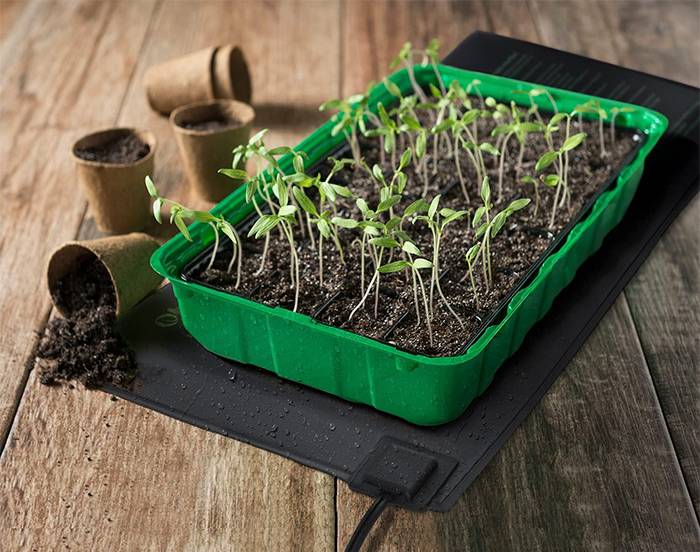
Gardening Month by Month – March: You Can Sow Several Varieties Of Vegetable Seeds In a Unheated Greenhouse On a ‘Heated Mat’

Gardening Month by Month – March: Start Sowing Biennial Flower Seeds in March, Foxgloves Are An Ideal Option
In March: Fruit & Veg
- Start sowing vegetable seeds in a heated greenhouse or on an indoor heated mat, Seeds can include tomatoes, peppers, and aubergines, to give them a head start before transplanting them outside later in the year.
- Begin chitting early potatoes in a cool, light location to encourage strong sprouting before planting them out.
- Start sowing vegetable seeds outdoors, such as early carrots, (Nantes, and Adelaide) radishes, and spinach, all work well as the soil begins to warm up. You may need to protect early outdoor sowings from potential frost damage by using fleeces or cloches to shield the young plants from damage, beware.
- Apply a balanced fertiliser to fruit trees and raspberry canes to provide essential nutrients for healthy growth and fruit production.
- Apply a layer of mulch around fruit trees and fruit bushes to suppress weeds, retain moisture, and provide essential nutrients to the soil.
- Continue checking fruit cages and netting to ensure they are in good condition and properly secured to protect emerging fruit from birds and pests.
- As the soil warms up, those who grow or would like to grow herbs outdoors can begin sowing their seeds, such as parsley, chives (known to be a companion plant) and perhaps later in the month coriander. Sow in pots or directly into the ground for a fresh supply of culinary herbs.
- March brings the possibility of sowing melon and pumpkin seeds indoors for later transplanting into well-prepared, warmer soil in April and May.
- Check fruit tree ties and adjust them as necessary to provide adequate support for young trees and prevent their damage from strong winds.
- Check fruit tree and bush irrigation systems to ensure they are in good working order and provide adequate water to support healthy growth and fruiting.
- Inspect fruit tree rootstocks for signs of suckers or unwanted growth, and remove them to encourage healthy, productive trees.
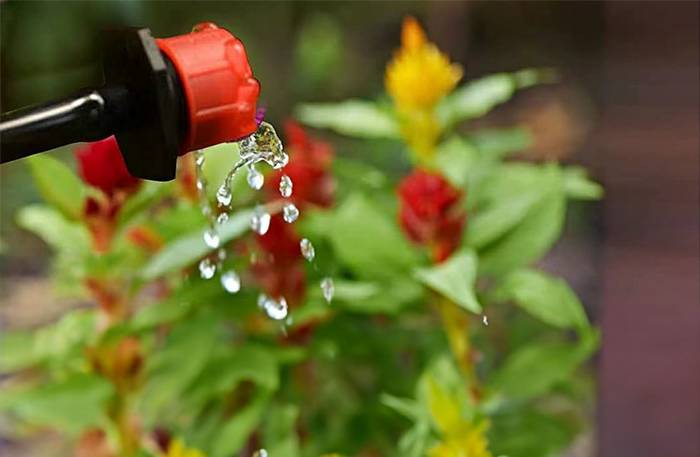
Gardening Month by Month – March: Check Irrigation Systems Are in Good Working Order For The Growing Season Ahead.
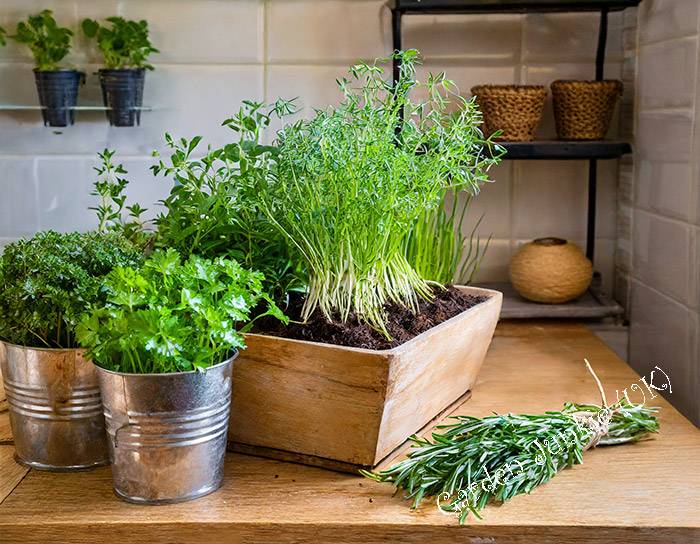
Gardening Month by Month – March: Sow Herbs in Pots And or Plant Out As The Ground Warms Up This Month.
In March: Pond Care
- Begin feeding fish sparingly as they become more active in the increasing temperatures, ensuring not too overfeed and pollute the water.
- Inspect your pond for any signs of damage, such as cracks or leaks, that may have appeared over the winter, take any corrective action to prevent water loss and maintain a healthy environment for fish and plants.
- Continue removing any debris, such as fallen leaves and twigs, in your pond to prevent water contamination and maintain water clarity.
- Check the condition of your pond pump/s and filters, cleaning or replacing them as necessary to ensure optimal water circulation and filtration.
- Begin dividing and repotting your aquatic plants to promote healthy growth and prevent overcrowding in the pond.
- Start introducing beneficial bacteria to your pond, which you can buy online or at your local pond/fish supplier this will help break down toxic fish waste, and organic matter that has built up over the winter. Adding bacteria also prevents the accumulation of further harmful substances.
- Check the condition of your pond netting or other protective measures to prevent access by predators, such as herons or cats, especially during the up-and-coming breeding season.
- Inspect the pond’s water quality using your test kit, A neutral pH level supports the process of beneficial bacteria, establishing colonies in your pond. Once tested, you may need to adjust parameters as necessary to maintain a healthy and balanced aquatic environment.
- You can begin introducing new aquatic plants to your pond this month, such as water lilies or oxygenating plants, to enhance the ecosystem and provide shelter for your fish.
- Start monitoring the water temperature regularly, adjusting feeding and other care routines based on the changing needs of your fish and plants.
- Start planning and preparing for the introduction of any new fish or aquatic life into your pond, researching and selecting suitable species for the environment and existing inhabitants.
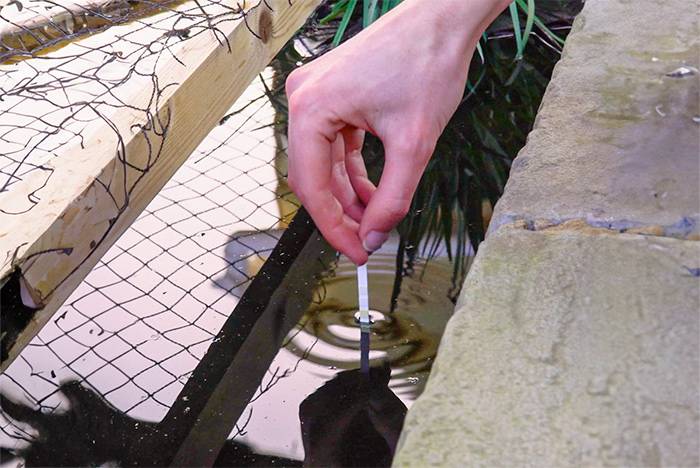
Gardening Month by Month – March: Checking Pond pH This Month is Important For Water Quality And Fish Health
In March: General Garden Maintenance
- Inspect and clean garden tools, such as secateurs and shears, ensuring they are sharp and in good working condition for upcoming tasks.
- Inspect and clean garden furniture and outdoor living spaces, preparing them for use as the weather improves.
- Begin mowing the lawn as needed, gradually lowering the cutting height to encourage healthy, dense growth.
- Start planning and preparing for the introduction of new garden features, researching suitable types and designs for the garden.
- Inspect and clean any bird feeders and nesting boxes you may have, providing a welcoming environment for garden wildlife.
- Inspect and repair garden structures, such as trellises and fences.
- Inspect and repair garden lighting, such as solar or low-voltage fixtures, ensuring they are functional for extended daylight hours.
- You should also inspect and clean ‘gutters’ and downspouts to prevent water buildup and potential damage to the garden and your property from summer downpours.
- Inspect and clean garden storage areas, such as sheds and toolboxes, organising and decluttering them for easy access to gardening supplies.
- Begin inspecting and maintaining outdoor play equipment, ensuring it is safe and in good condition for your children’s use as the weather improves.
- Start planning and preparing for the establishment of a composting area, researching suitable methods and containers for composting organic waste.
- Put into motion your earlier plans and prepare garden spaces for the introduction of pollinator-friendly plants to support local wildlife.
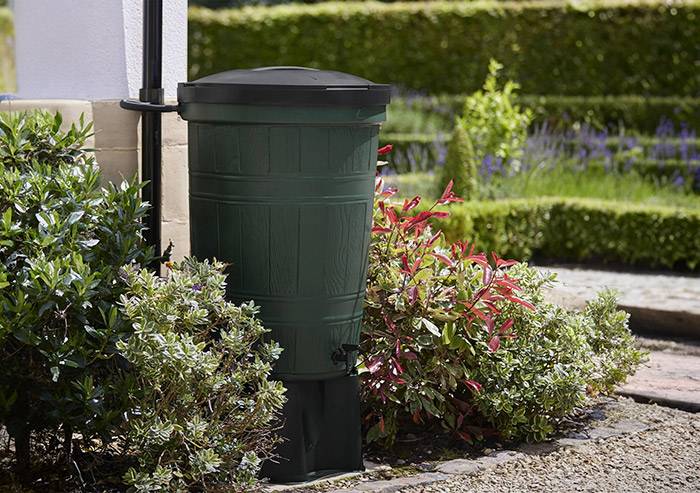
Gardening Month by Month – March: Inspect And Clean Gutters And Water Butts to Prevent Any Damage to Property or Gardens
FAQ’s
What Are Some Early Signs of Spring Pests And Diseases, And How Can I Prevent Them?
Is it Too Early to Apply Fertiliser in March?
Not necessarily! You can start feeding your lawn with a slow-release fertiliser specifically designed for spring. However, hold off on fertilising hungry feeders like roses or vegetables until they show signs of active growth.
What Are Some Tips For Controlling Early Spring Weeds in The Garden?
In March, it’s important to stay proactive in controlling early spring weeds by hand-weeding, mulching garden beds, and using targeted weed control methods to prevent weed competition with desirable plants.
When Should I Start Preparing my Lawn For The Growing Season in March?
March is a good time to begin lawn care tasks such as aerating, scarifying, and applying a spring lawn feed to promote healthy growth and recovery from winter.
